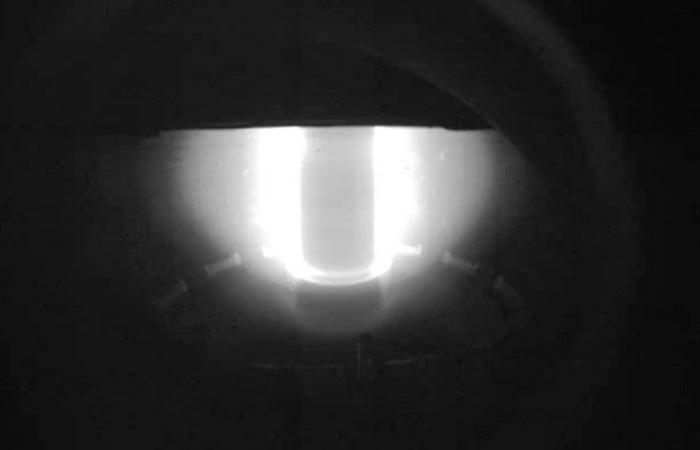That transition, achieved last week by a machine called the MAST Upgrade in Culham, Oxfordshire, is the foundation of a working nuclear fusion reactor that dream scientists have been trying to make for decades.
In nuclear fusion, the cores of two or more lighter elements merge into a heavier core and release energy. This phenomenon occurs in the heart of the sun, and if we can sufficiently replicate and sustain the same reactions on earth, we can reap the benefits of clean, virtually unlimited, low-carbon energy.
Artist’s impression of the MAST upgrade tokamak. (CCFE / UKAEA)
We’re not quite there yet, but the successful completion and first test run of MAST Upgrade is an important milestone on the way. The original MAST (Mega Amp Spherical Tokamak) system was in operation from 1999 to 2013, and its successor has been in the works ever since. It is therefore an important proof of concept.
“We want the UK to be a world leader in fusion energy, realizing its amazing potential as a clean energy source that can last hundreds of years,” UK Science Secretary Amanda Solloway said in a statement.
“Turning on the MAST upgrade device is a milestone in this national fusion experiment and brings us one step closer to our goal of building the UK’s first fusion power plant by 2040.”
A fusion reactor needs some kind of device to take advantage of the reactions occurring in the plasma. Tokamaks – circular devices that use magnetic fields to pick up the plasma created by the fusion reaction – are one of the leading designs for such a device.
Tokamaks have long used a donut-shaped configuration, but newer devices like MAST Upgrade are examples of a more advanced spherical tokamak design that is expected to offer numerous benefits in terms of efficiency and performance.
MAST Upgrade, operated by the Culham Center for Fusion Energy (CCFE) which is part of the UK Atomic Energy Agency (UKAEA), will need all of these benefits as well. Now that it’s up and running, the fusion experiment will have some pretty big challenges to solve over the next few years.
First and foremost, these are heat exhaust gases. Fusion reactors generate incredible amounts of heat that can damage the components of the reactor. To address this issue, MAST Upgrade will test a new type of exhaust system known as a “Super-X divertor” that is designed to reduce the heat and power load from particles exiting the plasma.
If the divertor is successful, it could provide 10 times the heat drawdown compared to before, which could be enough to make fusion reactors a cost-effective technology in future power plants.
That’s a big if, but everything about fusion reactors is big, and MAST Upgrade, while it’s a huge project that took seven years to build, is just a small piece of the whole puzzle.
The device is actually a test run for an even bigger project, the Spherical Tokamak for Energy Production (STEP), which will be the first prototype of a fusion power plant in the UK and is expected to be completed by 2040.
In the meantime, what researchers can learn from MAST Upgrade will also influence another big endeavor: the world’s largest nuclear fusion experiment, the International Thermonuclear Experimental Reactor (ITER).
ITER is currently being put together in the south of France, involving thousands of scientists from over 30 countries. It’s been in the pipeline for years and about five years behind schedule, but when the project is complete (estimated cost close to $ 65 billion), ITER will be our best chance yet of showing that energy generated by nuclear fusion can be used by human hands.
We may be years away from discovery, but MAST Upgrade is a huge step forward in getting us there.
“ITER is the next generation of fusion devices,” explains CCFE physicist Andrew Thornton.
“MAST Upgrade will help with this by providing data from experiments we’re doing here to determine how this machine should perform in the future.”
These were the details of the news A huge fusion experiment in the UK has just reached the... for this day. We hope that we have succeeded by giving you the full details and information. To follow all our news, you can subscribe to the alerts system or to one of our different systems to provide you with all that is new.
It is also worth noting that the original news has been published and is available at de24.news and the editorial team at AlKhaleej Today has confirmed it and it has been modified, and it may have been completely transferred or quoted from it and you can read and follow this news from its main source.

